Electrical
conduction in granular media:
From
Branly Effect to intermittency!
The Branly Effect finally reveals its secrets
Discovered
in 1890 by Edouard Branly, "the coherer effect" or "Branly
effect" is an electrical transition from an insulating to a
conductive state of an oxidized metallic powder when an
electromagnetic wave is emitted in its vicinity. Such a
wave detector was at the origin of the first wireless radio
transmissions at the end of the 19th century. However, the
physical origin of this phenomenon still remains not well
understood. A similar phenomenon of conduction transition
is also observed when a DC voltage is directly applied to the
sample and exceeds a certain value (we will call it herafter "DC
Branly effect").
More than 110 years
after the Branly discovery, various experiments (1D or 2D
network of balls, and metallic powder) were performed at the Ecole Normale
Supérieure de Lyon, in order to understand the origin of
this electrical conduction transition. These studies were
notably rewarded by the 2004 Branly
Prize.
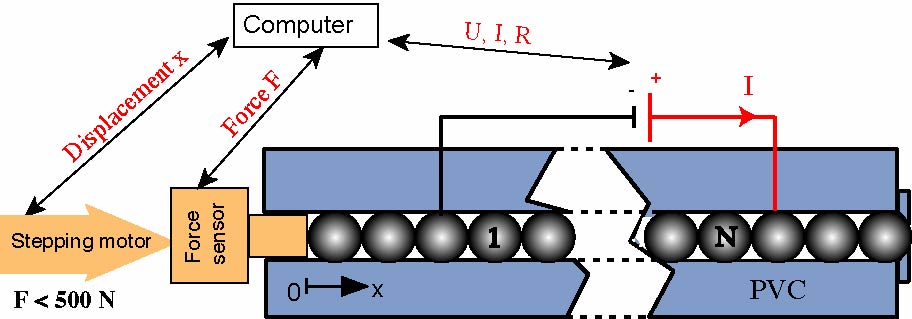
By
means of a model experiment with a chain of metal balls, we show
for the first time that the mechanism of the electrical
conduction transition (DC Branly effect) results from the local heating of the microcontacts
between each ball where microwelding occurs [1, 2, 1v, 2v, 4v, 1p]. The
increase in temperature reached 1050°C for an applied voltage as
low as 0.4 V! The electrical conduction transition is
related to the local properties of the contact between two
grains. It constitutes a first step towards more realistic
granular media such as a 2D network of ordered balls (including
the disorder of the contacts), or a metal powder sample
(including the disorder of position) as discussed below.
In 2007, we studied the
role of nearby electromagnetic waves (sparks) on the electrical
conductivity of the chain of beads [3].
The effect of the spark is to lower the values of the most
resistive contact, the most conductive contacts remaining
unchanged. We show that the spark remotely generates within the
chain a strong enough current to create microwelds between
beads. This explains why the resistance of a granular medium is
so sensitive to the electromagnetic waves produced in its
neighborhood (Branly Effect).

Electrical noise, intermittency in a
metallic powder
We
apply a DC voltage to a metal powder. Under certain
conditions, the temporal evolution of the current is then very
noised. We show that this electric noise has interesting
properties of scale invariance (over 4 decades in time) and of
intermittency which come from thermal expansions locally
creating or destroying the electrical contacts [4, 3v, 1p, 2p]. These expansions
can take place on various scales (size of the grain, size of
force network, size of the sample): The small scales
depend on the large ones with similarities and differences with
hydrodynamic turbulence. These astonishing phenomena of
self-similarity are connected to the collective effects of the
granular matter. Finally, with an AC applied voltage, we
highlighted that the electric conduction of a metallic powder
results from the wide distribution of contact resistances
between grains, and does not bring in microscopic model of
conduction, nor parameter related to the disorder of the medium
[6].

Does the dimension matter for
electrical conduction in granular media?
We reported measurements of the electrical
conductivity in granular systems of various dimensions (1D, 2D
or 3D). A new measurement technique provides a map of the
electrical current paths within a 2D triangular lattice of
metallic beads (2800 beads of mm size) [5].
We found that the current paths are localized in few discrete
linear paths, and showed the quasi-1D feature of the electric
conductivity in this 2D system can be easily explained. Finally,
we reported on the pressure dependence of the electrical
resistance in a 1D and 3D granular materials. It shows that the
strong dependence of the resistance on the pressure applied to
the granular media is a consequence of large variabilities and
heterogeneities present at the contact surface between two
grains [7].
Réferences
International peer-reviewed journals:
Branly effect:
- [1] E. Falcon,
B. Castaing and M. Creyssels, European
Physical Journal B 38, 475 - 483 (2004)
-
Nonlinear electrical conductivity
in a 1D granular medium
- [2] E. Falcon
and B. Castaing, American Journal of Physics 73, 302 - 307 (2005)
-
Electrical conductivity in granular
media and Branly's coherer: A simple experiment
[3] S. Dorbolo, A.
Merlen, M. Creyssels, N. Vandewalle, B. Castaing and E. Falcon, EPL (Europhysics Letters) 79, 54001 (2007)
Effects
of electromagnetic waves on the electrical properties of
contacts between grains
Electrical conductivity in
granular media:
- [4] E. Falcon, B.
Castaing and C. Laroche, Europhysics
Letters, 65, 186 - 192 (2004)
-
Turbulent
electrical transport in Copper powders
[5] M. Creyssels, S.
Dorbolo, A. Merlen, C. Laroche, B. Castaing and E. Falcon, European Physical Journal E 23, 255 (2007)
Some
aspects of electrical conduction in granular systems of various
dimensions
[6] M. Creyssels, E. Falcon and B. Castaing, Physical Review B 77, 075135 (2008)
Scaling of
AC electrical conductivity of powders under compression
[7] M. Creyssels, C. Laroche, E. Falcon and B. Castaing, Eur. Phys. J. E 40, 56
(2017)
Pressure
dependence of the electrical transport in granular materials
Popularization articles:
- [1v] E. Falcon and
B. Castaing, Pour La Science 340, 58 - 64, Février 2006 (French
edition of Scientific American)
-
L'effet Branly livre ses secrets
- [2v] E. Falcon and
B. Castaing, Bulletin
de la Société Française de Physique, 148, 9 - 12 (2005) (in
french)
-
Transport électrique dans les milieux
granulaires : L'effet Branly continu
- [3v] E. Falcon, B.
Castaing and M. Creyssels Bulletin
de la Société Française de Physique, 149, 6 - 9
(2005) (in french)
-
Transport électrique dans les milieux
granulaires : Bruit et Intermittence
[4v] E. Falcon, and B.
Castaing, Investigacion Y
Ciencia 404, pp. 80 -
85, Maio 2010 (Spain edition of Scientific American)
El efecto Branly
Proceedings:
[1p] E. Falcon and B. Castaing, in Powders
& Grains 2005, R.García-Rojo,
H.J.
Herrmann & S. McNamara, Eds. A.A.Balkema, pp. 323 - 327 (2005)
Electrical
properties of granular matter: From Branly Effect to
intermittency
- [2p] M. Creyssels,
E. Falcon and B. Castaing, in Ribotta R. (Ed.), Rencontre du
Non-Linéaire 2005, Non Linéaire Pub., Orsay, pp. 55 - 60 (2005) (in french)
Bruit et intermittence du
transport électrique dans les milieux granulaires
[3p] M. Creyssels, E.
Falcon and B. Castaing, AIP
Conference Proceedings 1145, pp. 123 – 126 (2009)
Experiment
and theory of the electrical conductivity of a compressed
granular metal
-




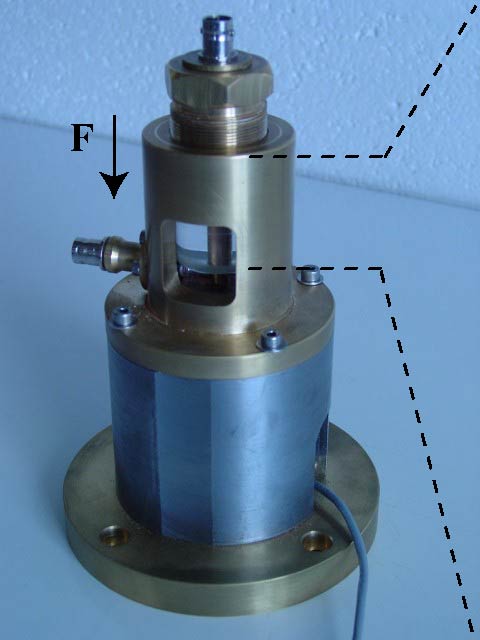
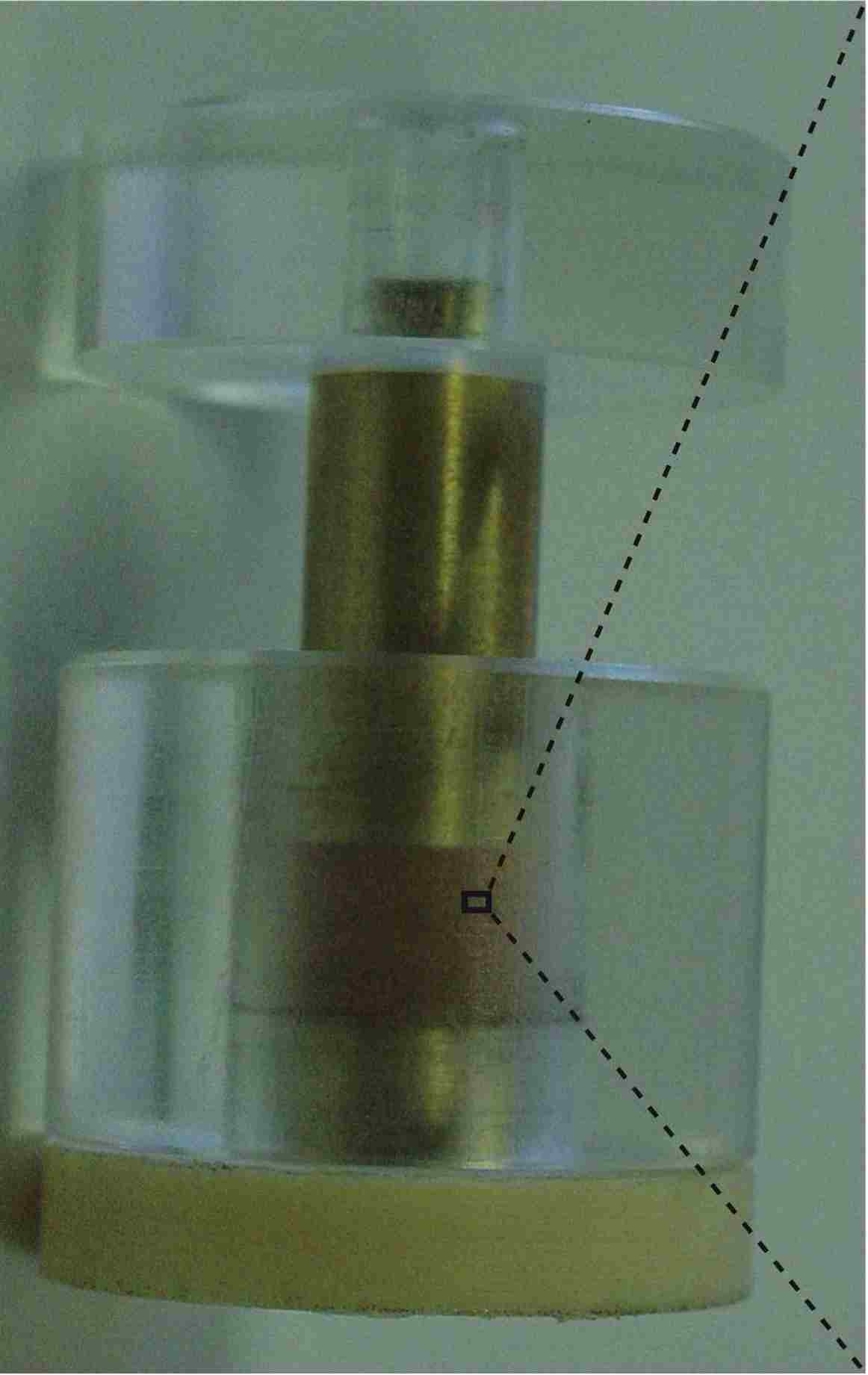
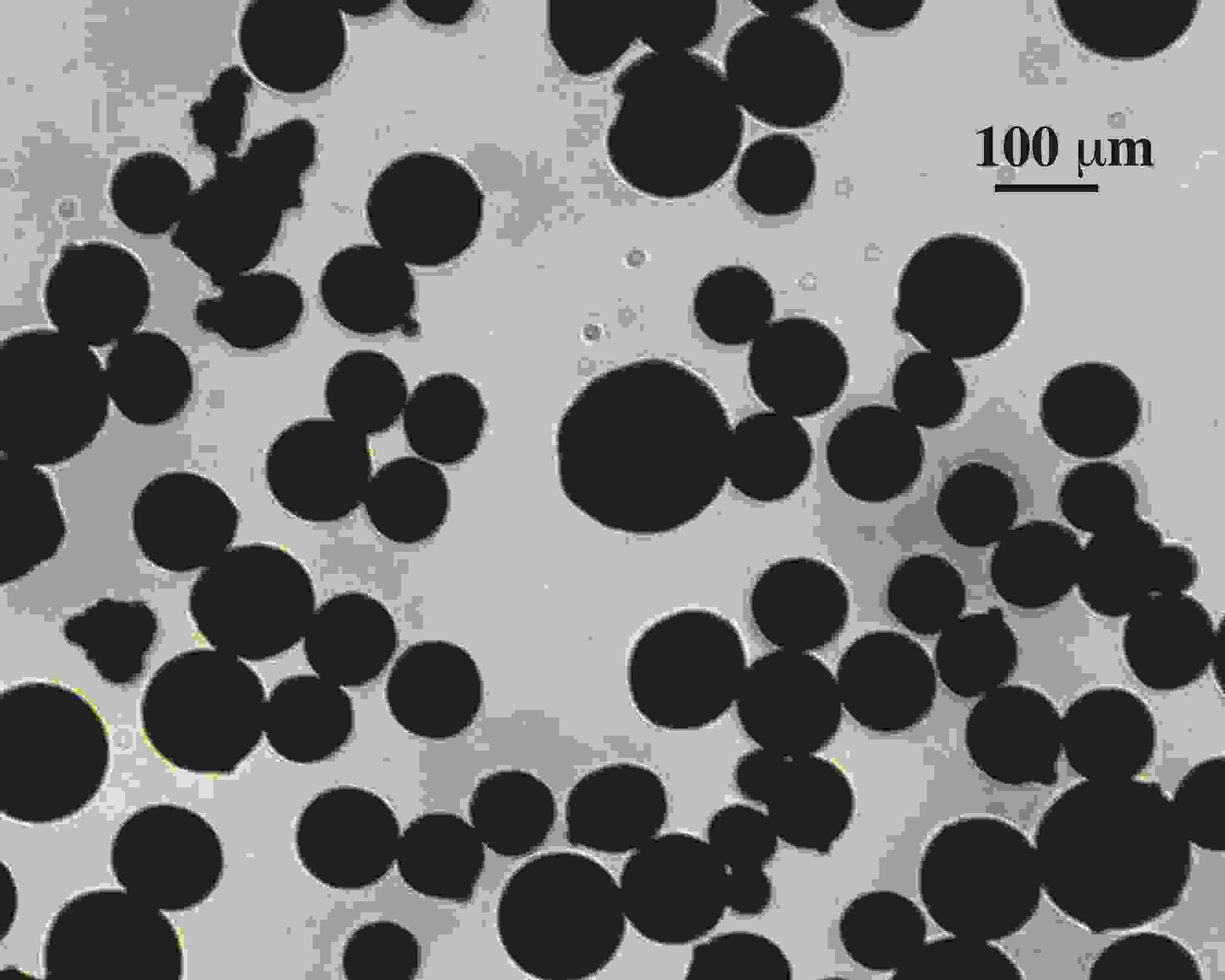
![]()
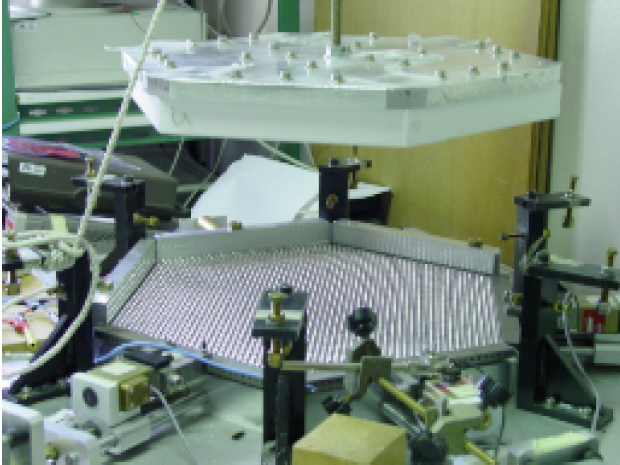
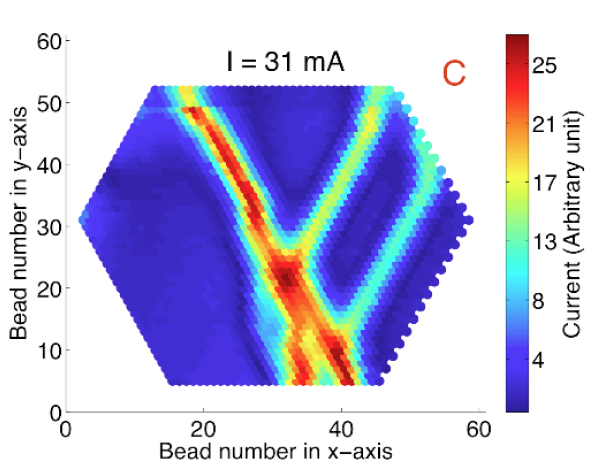
![]()